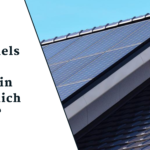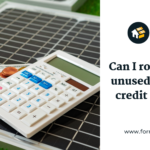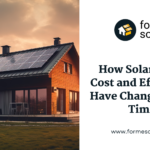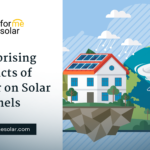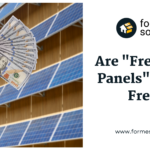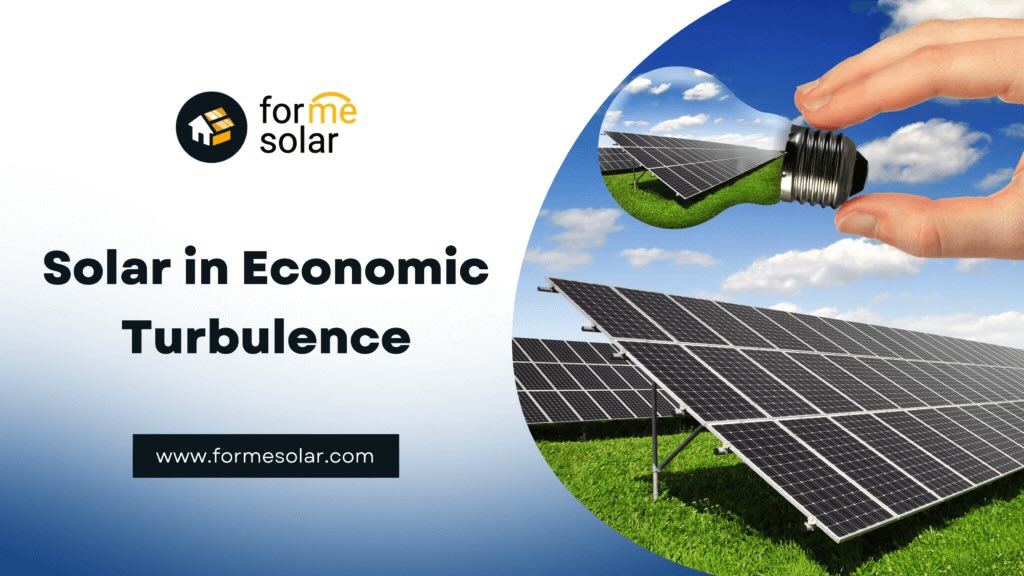
Table of Contents
Solar in Economic Turbulence
Does the value of solar stay strong during economic uncertainty?
The U.S. Senate leaders seemed to have reached a deal to pass a landmark clean energy budget package that would extend the solar income tax credit and boost domestic solar manufacturing, a number of major solar companies saw big gains in the stock market. This is a sign that investors are optimistic that homeowners will continue to see value from solar and make the switch despite the turbulence in the economy at large.
It’s no secret that we’re living in a time of economic volatility. The global pandemic has disrupted supply chains, with the effects being felt in nearly every industry. Inflation means that the dollar isn’t going as far as it used to. International conflicts have driven up energy prices, making a bad situation worse. With all of this in mind, some homeowners are tightening their belts and taking a hard look at whether it’s really worth it to shell out the cash for major home improvement projects.
At Forme Solar, we understand that homeowners may have concerns about the impact of economic turbulence on their decision to go solar. While we are not financial advisors, we believe that solar energy is a smart and responsible investment for homeowners. Our team is dedicated to providing the necessary information and resources to help homeowners make informed decisions that are best for them and their families.
Our aim in this piece is to highlight the benefits of solar energy as a long-term and sustainable investment. Despite economic uncertainty, solar energy can provide a predictable and cost-effective source of energy for years to come. We believe that by making the switch to solar energy, homeowners can not only save money on their utility bills but also contribute to a cleaner and healthier environment for future generations. We are committed to supporting homeowners in their journey towards a more sustainable and energy-efficient future.
Recapping the solar value proposition
Of course, there are good reasons for going solar besides the financial advantages. Stressing less about utility outages is one; doing your part to help the environment is another. However, since the focus of this post is on the pros and cons of going solar during economic volatility, we’ll stick to the dollars-and-cents considerations of the decision.
The financial benefits of residential solar have an immediate, day-to-day dimension, and a long-term dimension. The immediate financial return from solar comes in the form of lower energy bills. During a time of inflation and higher utility energy costs, many homeowners will appreciate the savings on their monthly utility costs. Over time, those savings more than offset the cost of the solar system, allowing solar-empowered homeowners to enjoy many years of return on their investment.
The long-term value of solar doesn’t just come from decades of smaller utility bills, however: it comes from “future-proofing” yourself against future economic changes by locking in lower energy costs.
What we mean when we talk about “locking in” lower energy costs
As we all know, the rates for electricity charged by utilities are variable. Even in states with deregulated energy markets where homeowners can choose from a variety of electricity providers, it can be necessary to change providers frequently to secure the best rates. In the short term, rates are impacted by changes in the price of natural gas and coal, since most utility power plants still generate electricity by burning these fossil fuels. In the long term, for most homeowners it’s a pretty safe bet that utility electric prices will only trend upward.
When you go solar, you’re not just purchasing the components of your solar system – you’re also purchasing all of the energy that the system will ever generate. This means that when you go solar, you are acquiring energy at a fixed, predictable cost that you know won’t fluctuate in the future. If you pay cash for your solar system, then all of the energy that system will produce over its decades-long warrantied lifespan is bought and paid for up front.
If you finance your solar system, then the terms of the loan, including the interest rate and repayment period, are known and fixed from the outset, and you have in essence bought all the energy your system will produce under those terms.
This is what we mean when we say that going solar gives you the power to lock in lower energy costs. Solar is unaffected by the factors which cause utility energy rates to change, and since payment for your solar energy has already been set at fixed terms when you go solar, you don’t need to worry about inflation or changing interest rates.
What remains unpredictable
It’s important to be clear that not everything about solar is set in stone. The main area of uncertainty in solar is government regulatory and incentive policies.
In many states, an important part of the value proposition of solar is net metering. We’ve covered net metering in more detail in our guide to solar billing structures article, but in brief, net metering pays you for generating more energy with your solar system than you use. Utility companies have frequently tried to eliminate or greatly reduce the value of net metering through their government lobbying efforts; one such attempt was recently vetoed by the governor in Florida, and utility-backed changes to net metering are currently under consideration in California. It’s important to note, however, that proposals to reduce the value of net metering almost always include a “grandfather clause” for existing solar customers.
The federal government, as well as some states and localities, also offer various incentives that can reduce the costs of going solar as a way of encouraging solar adoption and speeding up the transition away from fossil fuels. Like any other government program, these incentives are subject to changing with the political winds.
Currently the most important solar incentive available is the federal renewable energy income tax credit, which can cover over one-fourth of the price of a new residential solar system. This credit is currently on the books for the next ten years, but it was only saved by Congress at the last minute after previously being set to begin stepping down in value and then expire completely at the start of 2023.
What could be gained or lost by waiting
Although we think that the present period of economic turbulence actually highlights the value of solar in many ways, it’s undeniable that it also presents some challenges for the solar industry and homeowners considering solar. We would be doing our readers a disservice if we didn’t give these issues serious consideration.
The first argument against going solar right now is that homeowners who do so will get less choice. The disruptions in supply chains mean that the availability of some solar components has been drastically reduced. Instead of being able to use the exact brands and models of panels, inverters, and other components that they want, solar providers and homeowners may have to accept simply using whatever options can be procured without a lengthy delay.
The reason we don’t consider this a strong reason to put off going solar is that frankly, which specific components are used in a solar system doesn’t make much of a difference. But what it boils down to is that solar system components have essentially become commoditized. The gap in performance between solar panels in the same wattage class from two different brands is negligible. In our view, waiting to go solar simply to have access to “premium” components just doesn’t make sense when there won’t be any noticeable difference in the day-to-day use of the system.
The second argument for putting off a solar purchase is about value. The difficulty in sourcing solar components and the materials used to produce them means that the prices of solar system parts have spiked since the start of the pandemic, reversing (at least for the moment) a long steady trend of declining costs. This means that theoretically, homeowners might be able to get a better system for the same amount of money by waiting until prices normalize.
The problem with this argument is that it assumes a fairly quick return to pre-pandemic pricing trends, while all other factors remain unchanged. While it’s possible that lower component costs will allow you to buy a “better” system for the same amount of money several years from now, it’s just as likely that continued inflation and changes in solar incentive policies completely eliminate any additional value you might gain from waiting for solar prices to drop.
Even if your timing was perfect and you were able to buy a “better” system at a lower price a year or two down the road, the opportunity cost of waiting – in the form of money paid to the utility for power that could have been generated by solar – is almost certain to offset the savings.
We’re optimistic that solar component prices will eventually go back down and continue to decline. However, overall economic trends and shifts in government policies, which can have a far greater impact on the financial calculus of residential solar, are impossible to predict with any certainty – and each year you wait is a year you miss out on savings by continuing to buy all your power from the utility.
Taking a second look at solar during economic volatility
It’s understandable that in the current economic uncertainty, many homeowners would simply rule out a major home improvement project like going solar. If that was you, we hope that this article has maybe given you reason to reconsider. The fundamental value proposition of solar remains as strong as ever, and the consistent, predictable financial return of solar only looks more attractive in a time of economic uncertainty. Whatever the economic climate, you can count on the sun coming up tomorrow.
If you’d like to find out more about whether solar makes financial sense for your family, one of our expert energy consultants would be happy to talk with you at any time. We’ll work to keep this article updated with news about economic developments, pricing trends, and government incentive policy shifts that impact the residential solar value calculus.

